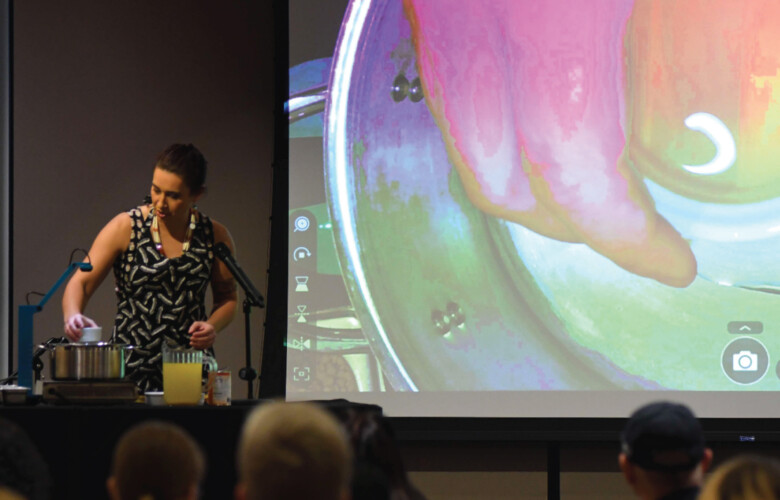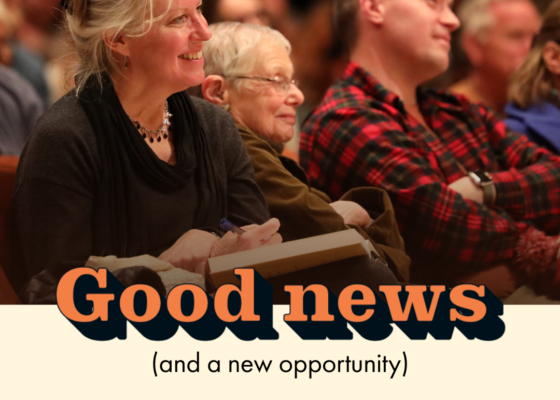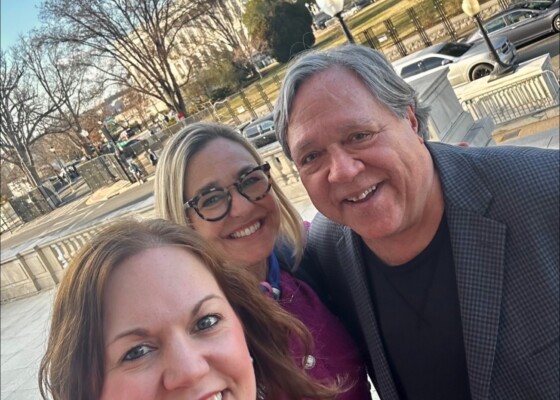Sovereign Sustenance: Indigenous Food Sovereignty Talk and Cooking Demonstration, Eiteljorg Museum of American Indians and Western Art
February 15, 2024This month, we’re highlighting the Eiteljorg Museum of American Indians and Western Art in Indianapolis, which received an INcommon Grant to host a free, live event as part of the…
This month, we’re highlighting the Eiteljorg Museum of American Indians and Western Art in Indianapolis, which received an INcommon Grant to host a free, live event as part of the annual Spirit & Place Festival. The program was a combination of a lecture, conversation, cooking demonstration and tasting and featured three Native women who are working to advance Indigenous food sovereignty: Mariah Gladstone (Blackfeet/Cherokee), a chef, an educator and the founder of IndigiKitchen; Felica Ahasteen-Bryant (Diné), the director of the Native American Educational and Cultural Center (NAECC) at Purdue University; and Dani Tippmann (Myaamia), director of the Kiihkayonki ARPA Community Food Program for the Miami Tribe of Oklahoma.
We talked with the project’s director, Alisa Nordholt-Dean, vice president of public programs and the Beeler Family director of education at the Eiteljorg Museum, about the program’s inception and how the humanities engaged guests.
What inspired you to create this program, and how does it fit into the broader context of the Eiteljorg’s mission and role to showcase and preserve Indiana’s Indigenous cultures?
The museum has a long-standing relationship with the Purdue Native American Educational and Cultural Center and its director, Felica Ahasteen-Bryant, and we often brainstorm and collaborate. In this instance, we were both very interested in exploring Indigenous food sovereignty and sought to bring in a chef that could speak to their work and do a live cooking demonstration using Indigenous ingredients, cooking methods and recipes. We always strive to provide programming that centers diverse Indigenous perspectives, stories and experiences, and this program was no exception. As part of our mission calls us to “inspire an appreciation of the art, history, and diverse cultures of Native America . . . ,” we always endeavor to offer a variety of programs that cover those three aspects, and Indigenous foodways and food sovereignty touch on art, history and culture in a multitude of ways.
In what ways did the collaboration between Chef Mariah Gladstone and Kahn’s Catering reflect Indiana’s Indigenous foodways and the availability of Indigenous ingredients in the state?
While working with Chef Mariah Gladstone (Blackfeet/Cherokee) and Kahn’s Catering, we specifically identified recipes that would incorporate foods that were relatively easy to source in Indiana and were historically important to the area. Before being forcedly removed from the state, the Miami were farmers, growing highly desirable Miami white corn, beans and squash, among other staples. The recipe settled upon for this demonstration was a pumpkin lentil soup in which the ingredients could be easily sourced and substituted — lentils or beans, pumpkin or other varieties of squash.
How did the program shed light on the specific challenges and opportunities related to food sovereignty in Indiana?
Felica Ahasteen-Bryant (Diné) and Dani Tippmann (Miami Tribe of Oklahoma) both live and work in Indiana, and both are making incredible strides in this area. Working through Purdue University, Felica has empowered Indigenous students from across the globe to incorporate foods and important plants from their perspective homelands into the gardens and education initiatives at the NAECC.
Dani lives and breathes this work in Fort Wayne, Indiana, on the traditional homelands of the Miami peoples. Dani spoke to some of the challenges — colonization and forced removal led to a loss of some food-related traditions. But in recent years, there has been a resurgence in interest in and an active revitalization effort under way with the support of the Miami Tribe of Oklahoma. Dani holds the newly established position of Kiihkayonki ARPA Community Food Program director with the Miami Tribe of Oklahoma and is charged with teaching the next generation of Miami people about traditional foodways. Both she and Felica are extremely excited about the opportunities that the future will bring in this area.
What key messages did each speaker communicate, and how did they resonate with the audience?
Chef Gladstone’s key message was the ability of Indigenous foods and foodways to create healthier diets [and to] strengthen ties to Indigenous ways of being and living, using food as a form of resistance against colonization. Many attendees were very excited to see her cooking demonstration and were inspired by how easy, and delicious, incorporating Indigenous foods into recipes and diets can be.
Felica Ahasteen-Bryant emphasized how growing, nurturing and harvesting important cultural foods can be done in small community gardens, and how larger institutions like Purdue can help support Indigenous food sovereignty initiatives. Many attendees seemed inspired to work with their own local organizations to help support these efforts.
Dani Tippman spoke about the importance of teaching Indigenous people their traditional foodways and passing down knowledge from one generation to the next. Non-Native support and advocacy is important, but Dani reiterated that the knowledge must be preserved and passed down within Indigenous communities. Her key message also seemed to resonate with the audience, as many attendees were not aware of the work that the Miami Tribe of Oklahoma is doing in northern Indiana and wanted to learn more about how they can help support the tribe’s efforts.
How were the tools of the humanities useful in engaging guests?
All of our guest speakers talked about the history and importance of food sovereignty within their own cultures and practices, and how recent revitalization efforts have helped heal and connect Native peoples to their own cultural and personal identities. History, geography, language, foodways and cultural practices are complex and inextricably tied. Guests at this program were able to pick up some of these threads and use them to reflect on their own food-related traditions and practices.
In what ways do you hope the program made a lasting impact on awareness and action in the community related to Indigenous food sovereignty?
Many attendees indicated that this program increased their awareness of Indigenous food sovereignty or educated them on a topic with which they were not previously familiar. Guests to the program left with a deeper understanding of the importance of Indigenous food sovereignty along with ways they can help support it — by sourcing local ingredients, supporting Indigenous businesses and foodway initiatives, getting to know native plants or even planting a garden.
Do you hope to create more programming building on this focus in the future?
We are excited to build on this theme and are actively exploring other opportunities that center Indigenous food sovereignty. There are so many people doing incredible work in this area, and we have only just begun to scratch the surface. Look for another food-related program featuring a prominent expert on Indigenous cuisine this fall!


